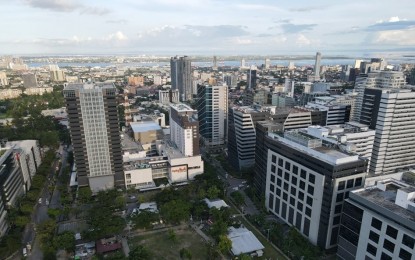
PNA file photo
MANILA – The Organisation for Economic Cooperation and Development (OECD) forecasts the Philippine economy to grow by 5.6 percent this year.
"A key growth driver in the second half of 2023 will be a strong rebound in government spending, from its 7.1 percent contraction in the recent quarter, executed through catch-up plans and frontloading of programs and projects," the OECD said in its Economic Outlook for Southeast Asia, China, and India 2023 Update released on Sunday.
The latest projection is slightly below the OECD's 5.7 percent earlier forecast.
The Philippines, however has the highest economic growth projection among the member countries in the Association of Southeast Asian Nations (ASEAN-5).
The OECD forecasts Indonesia to grow by 4.7 percent this year, Malaysia by 3.9 percent, Thailand by 2.8 percent and Vietnam by 4.9 percent.
According to the report, fiscal stimulus activities currently being implemented by the government will help fuel activities of both the public and private sectors in the Philippines.
"Domestic demand is expected to continue to underpin economic growth in the remaining semester of 2023 and up to 2024, supported by labor market expansion, personal income tax cuts, stable inflows of remittances and the steady recovery of tourism," said the OECD.
The report, however, noted that private investment is expected to continue to weaken amid high-interest rates and a subdued global economy. It also noted that the improving business sentiment and the implementation of reforms will encourage investor confidence and attract more foreign direct investment.
The services sector is likewise expected to boost economic growth due to the improved outlook of tourism and the rapid growth of the business process outsourcing industry.
The OECD said the prolonged weak external demand from the United States and China, the country’s top trading partners, will continue to drag down exports in the coming months.
"Another major downside risk to the growth outlook is lingering high global inflation, which could spur a further tightening of global financial conditions across advanced economies, possibly triggering capital outflows," it said.
"This could push down the value of the Philippine peso, which is forecast to recover slightly from a sharp depreciation episode in 2022," the OECD added.
The OECD said the persistent global financial turmoil could translate into higher borrowing costs for the government, adding pressure to public debt.
While headline inflation continues to decelerate, the OECD said core inflation remains elevated.
As of July this year, headline inflation was down to a 16-month low of 4.7 percent while core inflation, which excludes volatile oil and food items, settled at 6.7 percent.
"Upside risks to inflation remain, such as the looming threat that El Niño will impact agriculture output, wage increases in the urban sector and the lingering restrictive policy stance of the US Federal Reserve (the Fed) and the European Central Bank (ECB)," said the OECD.
Meanwhile, the Bangko Sentral ng Pilipinas is expected to maintain a high-interest rate regime, which the OECD said will dampen economic growth should pent-up demand ease.
For 2024, the OECD expects the Philippine economy to grow by 6.1 percent. (PNA)
